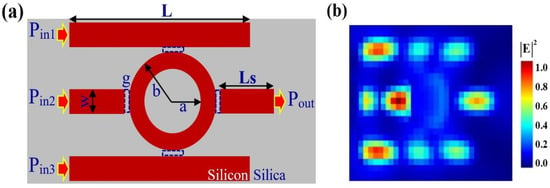Nano-Optics and Nano-Optoelectronics: Challenges and Future Trends
A topical collection in Nanomaterials (ISSN 2079-4991). This collection belongs to the section "Nanophotonics Materials and Devices".
Viewed by 4984Editor
Interests: optoelectronics; integrated photonics; nano-materials; quantum information; micro-/nano-processing
Special Issues, Collections and Topics in MDPI journals
Topical Collection Information
Dear Colleagues,
Combining the achievements of photonics and nano-technology to realize thoroughly novel optical, electronic, and optoelectronic functions, nano-optics and nano-optoelectronics currently represent one of the most active scientific and technological frontiers and have become indispensable. With significant advancements, nano-optics and nano-optoelectronics have already departed from their infancy and progressed into an innovative era, where research and theoretical concepts are being notably applied functional devices and real-life applications. A great volume of research on nano-optics and nano-optoelectronics has been conducted thus far, and its achievements suggest valuable application prospects in optical communication, optical interconnection, optical memory, sensing and imaging, metrology, display and lighting, medicine, security, green energy, etc. Studies in this field are becoming increasingly widespread.
In order to evaluate the current achievements and to promote the future developments of nano-optics and nano-optoelectronics, Nanomaterials is publishing this Topical Collection, “Nano-Optics and Nano-Optoelectronics: Challenges and Future Trends”. It will present reviews and state-of-the-art progress in research, as well as fundamental physics and practical technology, in the fields of nano-optics and nano-optoelectronics. Topics include, but are not limited to, nano-optics and photonics, silicon photonics, integrated photonics, nano-optoelectronics, optoelectronic integration, flat optics, photonic and plasmonic nanomaterials, metamaterials and metasurfaces, strong light–matter interactions at the nanoscale, nano-antennas, nano-waveguide chips, nano-optomechanics, nano-lasers, nano-optoelectronic detectors, quantum nano-optics, nonlinear and ultrafast nano-optics, topological photonics, and non-reciprocal nano-optics.
We welcome your excellent papers, and we believe that your contributions will help to accelerate the advancement of nano-optics and nano-optoelectronics.
Prof. Dr. Hai-Zhi Song
Collection Editor
Manuscript Submission Information
Manuscripts should be submitted online at www.mdpi.com by registering and logging in to this website. Once you are registered, click here to go to the submission form. Manuscripts can be submitted until the deadline. All submissions that pass pre-check are peer-reviewed. Accepted papers will be published continuously in the journal (as soon as accepted) and will be listed together on the collection website. Research articles, review articles as well as short communications are invited. For planned papers, a title and short abstract (about 250 words) can be sent to the Editorial Office for assessment.
Submitted manuscripts should not have been published previously, nor be under consideration for publication elsewhere (except conference proceedings papers). All manuscripts are thoroughly refereed through a single-blind peer-review process. A guide for authors and other relevant information for submission of manuscripts is available on the Instructions for Authors page. Nanomaterials is an international peer-reviewed open access semimonthly journal published by MDPI.
Please visit the Instructions for Authors page before submitting a manuscript. The Article Processing Charge (APC) for publication in this open access journal is 2400 CHF (Swiss Francs). Submitted papers should be well formatted and use good English. Authors may use MDPI's English editing service prior to publication or during author revisions.
Keywords
- nano-optics
- integrated photonics
- nano-optoelectronics
- flat optics
- nano-waveguide chips
- optoelectronic integration
- metamaterials and metasurfaces
- quantum nano-optics
- topological photonics
- nano-optomechanics












